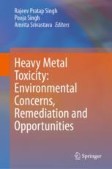Search
Search Results
-
Exploring glycine root uptake dynamics in phosphorus and iron deficient tomato plants during the initial stages of plant development
BackgroundPhosphorus (P) and iron (Fe) deficiencies are relevant plants nutritional disorders, prompting responses such as increased root exudation...

-
Root Development and Subsoil 15N-labelled N Uptake in Soybean (Glycine max (L.) Merr.)
The aim of this study was to investigate fertiliser-derived N uptake of soybean from different depths of the soil under field conditions. In...

-
l-DOPA Impacts Nitrate and Ammonium Uptake and Their Assimilation into Amino Acids by Soybean (Glycine max L.) Plants
l -3,4-Dihydroxyphenylalanine ( l -DOPA) is a non-protein amino acid with many biological roles, and it accumulates in species of the Fabaceae family....

-
Australian native Glycine clandestina seed microbiota hosts a more diverse bacterial community than the domesticated soybean Glycine max
BackgroundPlant microbiome composition has been demonstrated to change during the domestication of wild plants and it is suggested that this has...

-
Emerging role of osmoprotectant glycine betaine to mitigate heavy metals toxicity in plants: a systematic review
Heavy metals (HMs) toxicity has become one of the major global issues and poses a serious threat to the environment in recent years. HM pollution in...

-
Selective uptake of organic and inorganic nitrogen by Betula platyphylla seedlings from different provenances
Nitrogen (N) is essential in regulating plant growth and biomass allocation. Plant N uptake and assimilation influence species adaptation and...

-
13C labelling reveals details of the soybean (Glycine max (L.) Merrill) seedling metabolic network
Seedlings depend upon seed reserves for the prevision of carbon skeletons for growth and energy production. Post-germinative growth of soybean is...

-
Comparative Uptake of Peptides by Flow Cytometry
Cell-penetrating peptides (CPPs) offer great potential as delivery systems of various drugs and imaging agents for a variety of diseases. They have...
-
Dopamine Hydrochloride Alleviates the Salt-induced Stress in Glycine max (L.) Merr. plant
The objective of this study is to evaluate the role of dopamine hydrochloride (DH) in alleviating the detrimental effects of salt stress on Glycine max ...

-
The role of SHMT2 in modulating lipid metabolism in hepatocytes via glycine-mediated mTOR activation
Serine hydroxymethyltransferase 2 (SHMT2) converts serine into glycine in the mitochondrial matrix, transferring a methyl group to tetrahydrofolate....

-
Multifactorial interaction of selenium, iron, xylose, and glycine on cordycepin metabolism in Cordyceps militaris
AbstractCordycepin, a nucleoside analog, is the main antioxidative and antimicrobial substance in Cordyceps militaris . To improve the metabolism of...

-
Nitrogen enrichment enhances the competition for nitrogen uptake between Stipa purpurea and microorganisms in a tibetan alpine steppe
AimsNumerous studies have investigated whether plant growth is limited by the availability of nitrogen or phosphorus (or both) in alpine grasslands....

-
Cell-particles interaction – selective uptake and transport of microdiamonds
Diamond particles have recently emerged as novel agents in cellular studies because of their superb biocompatibility. Their unique characteristics,...

-
Integrated flux and pool size analysis in plant central metabolism reveals unique roles of glycine and serine during photorespiration
Photorespiration is an essential process juxtaposed between plant carbon and nitrogen metabolism that responds to dynamic environments....

-
Functional Analysis of Chloroplast Iron Uptake and Homeostasis
Iron has a crucial role in plastid biology. Iron is a required cofactor for the operation of the photosynthetic functions and other metabolic...
-
Characterization of Boron Toxicity Tolerance of Two Soybean (Glycine max L.) Varieties
Soybean ( Glycine max L.) is one of the most widely grown oilseed crops worldwide. Little is known about boron tolerance of soybean and although some...

-
Mitigation the Adverse Effects of Salinity on Red Bean Plants via Exogenous Application of Glycine Betaine, Zinc, and Manganese: Physiological and Morphological Approach
AbstractSince soil salinization is a concern all over the world, particularly in arid and semi-arid regions, the present study aimed to alleviate the...

-
Alleviating chromium-induced oxidative stress in Vigna radiata through exogenous trehalose application: insights into growth, photosynthetic efficiency, mineral nutrient uptake, and reactive oxygen species scavenging enzyme activity enhancement
Trehalose serves as a crucial osmolyte and plays a significant role in stress tolerance. The influence of exogenously added trehalose (1 and 5 mM) in...

-
Cadmium Toxicity in Plants: Uptake, Translocation and Phytoremediation Strategy
Cadmium (Cd) is a highly noxious, unnecessary and heavy metal element with no known biotic purpose. Cd harms not only plants but also humans by...
-
Evaluation of yield and quality attributes of barley cultivars with foliar spray of glycine betaine under lead toxicity
Lead (Pb) toxicity is a major environmental threat that severely affects growth and production of staple crops. Foliar applications of glycine...

